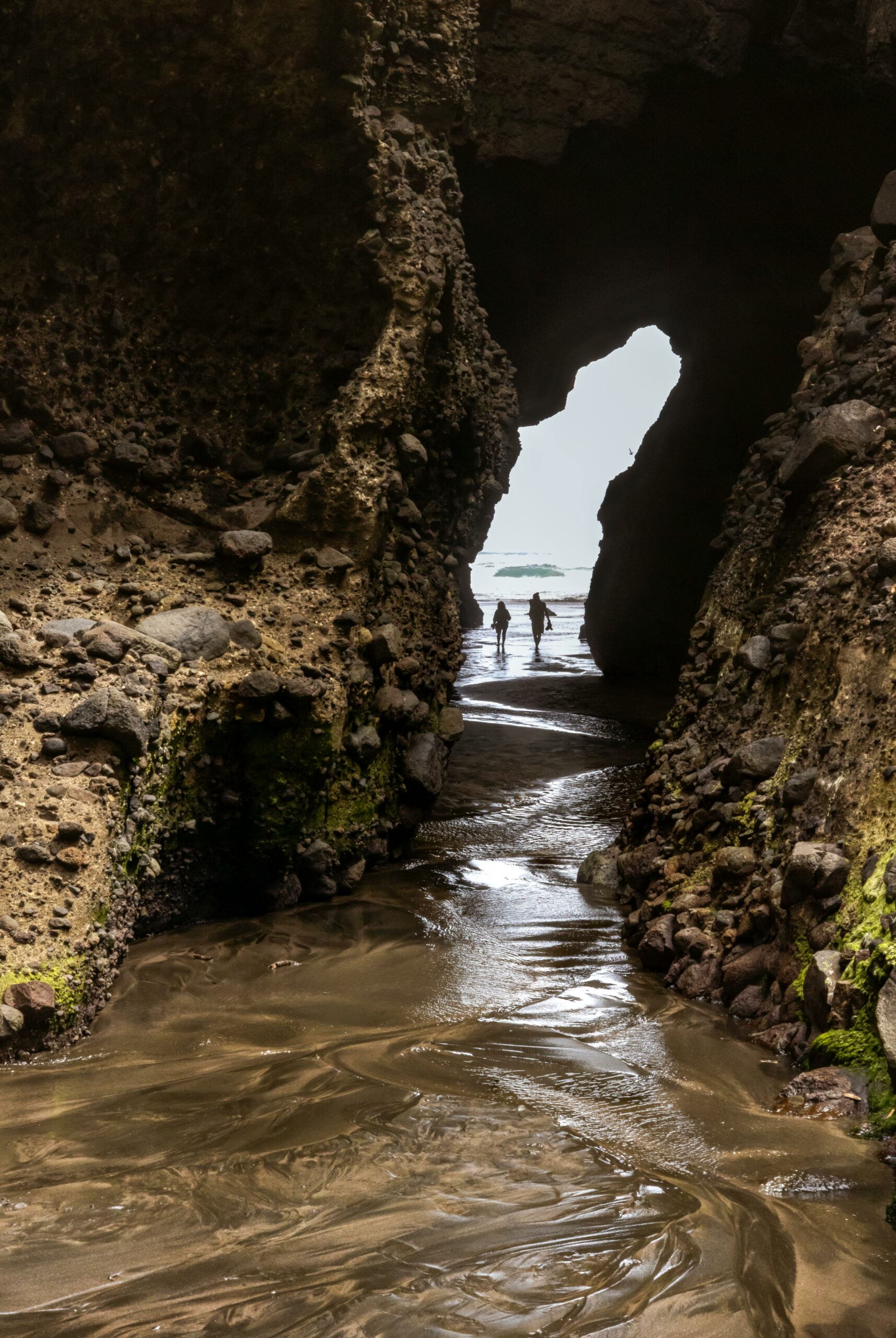Planning your next seaside escapade? Understanding the Tide Schedule Duxbury is absolutely essential for making the most out of your coastal adventures. Whether you’re a seasoned beachcomber, an avid kayaker, or simply someone who loves to explore the picturesque shores of this charming New England town, knowing the best times for tides in Duxbury can transform your experience. But why exactly does the Duxbury tide schedule matter so much, and how can you use it to your advantage? Keep reading to uncover the secrets of timing your visit perfectly!
Duxbury’s unique coastal geography means that the tide times significantly impact everything from walking along the scenic Duxbury Bay to spotting fascinating marine wildlife. Missing the ideal window could mean wading through thick seaweed or missing out on tidal pools teeming with life. Curious about when the water’s at its lowest or highest? The Duxbury tide table reveals the precise moments of low and high tides, helping you plan your day like a pro. Don’t let unpredictable tides ruin your plans; instead, harness the power of the tide schedule Duxbury to explore hidden coves, enjoy safe boating, or even try your hand at fishing with confidence.
If you’re wondering how to find the most accurate and up-to-date tide information for Duxbury, this guide is your go-to resource. From daily tide charts to monthly tide predictions, we’ll show you where to access reliable data and explain why staying informed about tides is a must for every coastal enthusiast. Ready to dive into the world of tides and discover the best times for your next Duxbury adventure? Let’s get started!
How to Read the Tide Schedule in Duxbury: Essential Tips for Coastal Explorers
If you’ve ever found yourself wandering along the charming shores of Duxbury, Massachusetts, you might have noticed how the tides can change everything—from the stretch of sandy beach to the kind of wildlife you can spot. Knowing how to read the tide schedule in Duxbury isn’t just for scientists or fishermen; it’s a must for anyone eager for coastal adventures, whether you’re planning a quiet walk, a fishing trip, or even a kayaking excursion. But understanding tide schedules can seem a bit tricky at first, especially if you’re new to the area or the concept. So, let’s dive into the essentials you’ll need to know about the tide schedule in Duxbury and how to make the most of the best times for your seaside explorations.
What is the Tide Schedule in Duxbury?
The tide schedule in Duxbury tells you when the water levels will be high or low along the coast. Because Duxbury is located on the Massachusetts coast, it experiences semi-diurnal tides, which means there are generally two high tides and two low tides every lunar day (about 24 hours and 50 minutes). These tides are influenced by the gravitational pull of the moon and sun, and local geography also plays a part in how the tide behaves here.
Tides aren’t just about water coming in and out; they shape the environment, affect marine life, and even influence the weather patterns nearby. Historically, understanding tides have been critical for Native American tribes and early European settlers who used the coast for fishing, travel, and trade.
Why Should You Care About Tide Schedules in Duxbury?
If you don’t check the tide schedule, you might end up stuck on a sandbar or miss the best fishing spot entirely. Also, some coastal trails or beach areas are only accessible during low tide. Ignoring tide times can be dangerous because the water can rise quickly, cutting off your way back or causing strong currents.
Here are some practical reasons to keep an eye on tide times:
- Planning beachcombing when tide is low to find shells and marine life.
- Avoiding unexpected water levels during kayaking or paddleboarding.
- Knowing the best fishing times, as fish behaviour changes with tides.
- Timing your visit to tidal pools when they are exposed.
- Ensuring safety during coastal hikes or walks near cliffs and rocky shores.
How To Read a Tide Schedule: The Basics
A typical tide schedule for Duxbury will list times for high and low tides each day, along with the height of the tide in feet or metres. It might look confusing, but here’s a simple outline of what you should look for:
- Date and Day – Every day will have two high tides and two low tides.
- Time – The exact time the tide reaches its highest or lowest point.
- Height – How high the water will be at high tide or how low it will be at low tide.
- Type of Tide – Sometimes schedules indicate spring tides (very high and low tides) and neap tides (moderate tides).
Example Tide Schedule for Duxbury (Sample Data)
Date: 15th June 2024
| Time | Tide Type | Water Height (feet) |
|---|---|---|
| 02:10 am | High Tide | 8.2 |
| 08:45 am | Low Tide | 1.1 |
| 02:35 pm | High Tide | 7.9 |
| 09:00 pm | Low Tide | 1.3 |
Note: Times are approximate and should be checked regularly before heading out.
Tips For Using Tide Schedules Effectively
- Always check the schedule a day before your activity because tides shift slightly every day.
- Use local tide charts from the National Oceanic and Atmospheric Administration (NOAA) or trusted maritime websites.
- Remember the tide times are based on local time; daylight savings might affect your planning.
- Combine tide data with weather forecasts because storms can change tide behaviour.
- Download mobile apps that provide real-time tide updates for Duxbury.
Comparing Duxbury Tides With Other Coastal Areas
Unlike some parts of the world, like the Gulf of Mexico, where tides are often minimal, Duxbury’s tidal range can be quite noticeable, sometimes over 7 feet difference between high and low tides. This is less than areas like the Bay of Fundy in Canada, famous for its extreme tides, but more dramatic than places with micro-tides.
For example:
- Duxbury: Semi-diurnal tides, 6-8 feet range.
- Gulf of Mexico: Diurnal or mixed tides, usually less than 2 feet.
- Bay of Fundy: Extremely high tides, up to 50 feet.
Knowing these differences helps you understand why tide schedules are so important in Duxbury’s coastal environment.
Top 5 Best Times for Beachcombing and Kayaking in Duxbury Based on Tide Patterns
Exploring the coastal beauty of Duxbury is a favourite pastime for many locals and visitors alike. Whether you’re into beachcombing for unique shells or kayaking along the serene waters, knowing when to head out is key. Tide patterns dramatically influence these activities, shaping the shoreline and water conditions. This article dives deep into the top 5 best times for beachcombing and kayaking in Duxbury, based on the tide schedule, so you can make the most of your coastal adventures.
Understanding Tide Schedule Duxbury: Why It Matters
Tides in Duxbury, Massachusetts, are primarily influenced by the gravitational pull of the moon and sun, as well as the geography of the coastline. The area experiences semi-diurnal tides, meaning there are generally two high tides and two low tides every day. This cyclical rise and fall of sea levels affects how much beach is exposed and how calm or rough the waters might be.
For beachcombers, low tides reveals the most treasures — from shells to sea glass and sometimes even ancient fossils. Kayakers, on the other hand, often prefer mid to high tides for smoother paddling and better access to certain coves and inlets.
Top 5 Best Times for Beachcombing in Duxbury
-
Early Morning Low Tide (Just After Sunrise)
- The beach is usually less crowded, giving you more space to explore.
- Cooler temperatures make it comfortable for long walks.
- Early low tides often expose tide pools teeming with marine life.
-
Late Afternoon Low Tide (Before Sunset)
- Low light conditions can make for dramatic photos.
- The tide uncovers hidden spots that are missed during high tide.
- This time is perfect for families finishing a day out on the coast.
-
Spring Tide Low (Around New and Full Moon)
- Tides are at their lowest extremes, revealing the widest beaches.
- Best chance to find rare shells and coastal fossils.
- Watch out for slippery rocks and stronger currents near tidal pools.
-
Low Tide on Weekdays (Midday)
- Less tourist foot traffic compared to weekends.
- Great for school groups or solo explorers wanting quiet.
- Stores and cafes nearby might be open for a quick refreshment.
-
Low Tide During Off-Season (Late Fall to Early Spring)
- Cooler temps might deter crowds but brings unique finds.
- Different marine species might appear stranded during colder months.
- Always dress warmly and check weather forecasts before venturing out.
Best Times for Kayaking in Duxbury According to Tide Patterns
Kayaking conditions depend greatly on tide timing, wind, and water currents. In Duxbury, the best times are usually when the tide is moving — coming in or going out — because the water is neither too shallow nor too rough.
-
Mid-Tide Slacks (Transition Between High and Low Tides)
These periods offer calm waters, ideal for beginners or casual paddlers. -
High Tide Mornings
Water covers rocks and sandbars, allowing kayakers to explore further. -
Late Morning Ebb Tide
The outgoing tide helps paddlers move with the current, making longer trips easier. -
Afternoon Flood Tide
Incoming tide can help kayakers return to shore with less effort. -
Cloudy, Low-Wind Days
Tide aside, calm weather improves kayaking safety and enjoyment.
Tide Schedule Duxbury: What You Should Know
The tide schedule in Duxbury changes daily and is affected by lunar cycles. Here’s a simplified example of typical tide times to plan your visit better:
| Date | Low Tide | High Tide | Ideal Activity |
|---|---|---|---|
| April 5 | 6:15 AM, 6:45 PM | 12:30 PM, 12:50 AM | Beachcombing (low tide) |
| April 6 | 7:00 AM, 7:30 PM | 1:20 PM, 1:40 AM | Kayaking (high tide) |
| April 7 | 7:45 AM, 8:15 PM | 2:10 PM, 2:30 AM | Beachcombing + Kayaking |
| April 8 | 8:30 AM, 9:00 PM | 3:00 PM, 3:20 AM | Best for kayaking |
| April 9 | 9:15 AM, 9:45 PM | 3:50 PM, 4:10 AM | Beachcombing (spring tide) |
Note: Times are approximate and should be checked before heading out.
Practical Tips for Coastal Adventures in Duxbury
- **Check
Why Understanding Duxbury’s Tide Schedule is Crucial for Safe and Fun Coastal Adventures
Why Understanding Duxbury’s Tide Schedule is Crucial for Safe and Fun Coastal Adventures
Duxbury, a charming coastal town in Massachusetts, is known for its beautiful beaches, rich maritime history, and vibrant coastal life. Visitors and locals alike flock to its shores for fishing, boating, swimming, and simply enjoying the ocean’s beauty. But one thing that many overlook is how important it is to understand Duxbury’s tide schedule before heading out. Ignoring tides can turn a fun day at the coast into a dangerous or disappointing experience. In this article, we’ll explore why knowing the tide schedule in Duxbury is essential, when the best times for coastal adventures are, and how you can use this knowledge to have a safer and more enjoyable time by the sea.
Why Tides Matter in Duxbury
Tides are the regular rise and fall of sea levels caused by the gravitational forces exerted by the moon and the sun. Duxbury, located on the Atlantic coast, experiences semi-diurnal tides, which means there are typically two high tides and two low tides each day. This natural rhythm affects everything from beach accessibility to marine life activity.
If you don’t check the tide schedule before visiting, you might find yourself stranded on a shrinking beach, or worse, caught in strong currents or rising waters. For instance, some parts of Duxbury Bay can become very shallow during low tide, making boating or kayaking difficult. Conversely, high tide might cover rocks or pathways you wanted to explore.
Historical Context of Duxbury’s Coastal Relationship
Duxbury’s connection to the tides isn’t new. The town was established in the early 1600s, and early settlers depended heavily on the sea for food and transportation. Fishing, shipbuilding, and salt marsh harvesting were all influenced by the tidal patterns. The indigenous people before them also used their knowledge of the tides to time their fishing and shellfish gathering.
Over centuries, this relationship shaped the town’s economy and culture. Even today, local fishermen and boaters rely on accurate tide information to plan their day. Understanding these patterns is not just for safety but also part of respecting the natural rhythm of the coastal environment.
When is the Best Time for Coastal Adventures in Duxbury?
If you want to get the most out of Duxbury’s beaches and waters, knowing the tide times helps you pick the best moments for different activities. Here’s a simple breakdown:
- Beachcombing and Exploring Tide Pools: Best done at low tide when more of the shore is exposed, revealing shells, crabs, and small marine creatures.
- Swimming and Surfing: Safer and more enjoyable near mid to high tide, ensuring deeper waters and fewer exposed rocks.
- Boating and Kayaking: Ideally during high tide or just as the tide is rising to avoid getting stuck in shallow areas.
- Fishing: Often better during the incoming or outgoing tides when fish tend to be more active and moving with the currents.
How to Read the Tide Schedule in Duxbury
A typical tide schedule provides times and heights for high and low tides each day. It might look complicated at first, but once you understand the basics, it’s quite straightforward.
Here’s an example of a daily tide schedule format for Duxbury:
Date: 15th June 2024
| Tide Type | Time | Height (feet) |
|---|---|---|
| High Tide | 4:15 AM | 9.2 |
| Low Tide | 10:30 AM | 1.1 |
| High Tide | 5:00 PM | 8.7 |
| Low Tide | 11:45 PM | 0.9 |
From this, you can see when the water is highest and lowest. Planning your activities around these times helps avoid surprises.
Practical Examples of Tide Awareness
- A family planning a picnic and beach play might check the tide to pick a day when low tide is during mid-morning, giving kids lots of room to run on exposed sand.
- Kayakers need to be cautious; launching at low tide might leave them paddling over mudflats or getting stuck. Instead, timing their trip to coincide with high tide makes navigation easier.
- Anglers often time their fishing trips around the tide changes, because fish are more likely to feed during these periods.
Duxbury’s Tide Schedule vs Other Nearby Coastal Areas
Tide schedules vary even between nearby towns due to differences in coastline shape and sea floor topography. For example:
- Duxbury usually has slightly higher tide ranges compared to nearby Plymouth because of its position in Duxbury Bay.
- Scituate, just south of Duxbury, experiences similar semi-diurnal tides but with slightly different timings.
- Boston Harbor tides can be affected by urban
Discover the 2024 Duxbury Tide Schedule: Plan Your Fishing Trips Around Optimal Tide Times
Discover the 2024 Duxbury Tide Schedule: Plan Your Fishing Trips Around Optimal Tide Times
If you’re someone who loves coastal adventures or fishing around New England, knowing the tide schedule is must. Especially when talking about Duxbury, a charming coastal town in Massachusetts with plenty of opportunities for angling and beachcombing. The 2024 Duxbury tide schedule can help you plan your trips better, and avoid disappointment from going at the wrong time. Tides effect everything from fish behaviour to accessibility of certain spots, so understanding when the tide rises and falls could be the difference between a successful day or a wasted one.
Why Tides Matter in Duxbury for Fishing and Coastal Activities
Tides are the rise and fall of sea levels caused by the gravitational forces of the moon and the sun acting on the Earth’s oceans. In Duxbury, tides influence not only the shoreline’s appearance but also the marine life activity. Fish tend to be more active during certain tide phases, so anglers who know the schedule can increase their catch chances.
- High tides often bring fish closer to shore.
- Low tides expose tidal flats and rocky areas, good for exploring or clamming.
- The changing currents during tide shifts stir nutrients, attracting baitfish and larger predators.
This natural rhythm has been observed for centuries by fishermen, and the 2024 tide schedule continues to provide vital info for daily planning.
Understanding the 2024 Tide Schedule for Duxbury
The 2024 Duxbury tide times are based on predictions calculated from lunar cycles and local geography. Because the moon’s orbit changes slightly every month, the tide times shift daily. This means you can’t just rely on the same time every day for high or low tide.
Here is a simplified explanation of the tide types you will find in Duxbury:
- Semidiurnal tides: Two high tides and two low tides each day, common in this area.
- Spring tides: Occur during full and new moons, with higher high tides and lower low tides.
- Neap tides: Occur during quarter moons, with less extreme tide differences.
For example, on a spring tide day in April 2024, you might see a high tide of 10.5 feet, while a neap tide might only reach 6 feet.
Sample Tide Table for Duxbury – April 2024
| Date | High Tide (Time) | High Tide (Height ft) | Low Tide (Time) | Low Tide (Height ft) |
|---|---|---|---|---|
| 1 April | 05:12 AM | 9.8 | 11:45 AM | 1.2 |
| 1 April | 05:45 PM | 9.9 | 12:10 AM | 1.1 |
| 15 April | 10:35 AM | 10.5 | 04:55 PM | 0.8 |
| 15 April | 11:10 PM | 10.6 | 05:30 AM | 0.7 |
| 30 April | 04:50 AM | 7.2 | 11:00 AM | 2.5 |
| 30 April | 05:20 PM | 7.3 | 11:35 PM | 2.6 |
Keep in mind these times change every day. It is best to consult a detailed tide chart or app for specific days you plan to visit.
Best Times For Fishing According To Tides in Duxbury
Fishing success often depends on tide phases, but this can be confusing for beginners. Here’s a rough guide to help you:
- Rising Tide (Flood Tide): Fish move closer to shore to feed, making this a great time for shore fishing.
- High Tide: Fish are actively feeding, but sometimes too spread out.
- Falling Tide (Ebb Tide): Fish retreat with the water but may gather in channels.
- Low Tide: Some fish are harder to find, but it’s ideal for digging clams or exploring tidal pools.
Local anglers often prefer fishing an hour before to an hour after high tide for best results.
Historical Context of Tide Observations in Duxbury
Duxbury’s relationship with tides isn’t new. Indigenous peoples and early settlers relied on tide knowledge for safe travel and fishing. The town’s harbour and marshlands have been influenced by tidal patterns for centuries, shaping the local economy and lifestyle.
In the 18th and 19th centuries, tide mills operated in Duxbury, harnessing tidal energies to power grist mills. This illustrates how crucial tides were beyond just fishing — they impacted industry and technology.
Tips to Make the Most of Your Duxbury Coastal Adventures in 2024
- Always check the
What Are the Most Reliable Sources for Up-to-Date Tide Schedules in Duxbury, UK?
Tide Schedule Duxbury: Discover The Best Times For Coastal Adventures
If you ever been to Duxbury, UK, or plan to visit its charming coastline, knowing the tide schedules is crucial. Tides influence many activities, from fishing and boating to beachcombing and coastal photography. But what are the most reliable sources for up-to-date tide schedules in Duxbury? This article tries to help you navigate the often confusing world of tidal information with practical advice and useful resources.
Why Tide Schedules Matter in Duxbury
Duxbury’s coastal environment is shaped by the Atlantic Ocean and the complex geography of the British Isles. The tides are caused mainly by the gravitational pull of the moon and sun, but local factors like the shape of the shoreline and seabed also affect timing and height of the tides. This means tide times can differ significantly even between nearby locations.
For example, if you’re planning a fishing trip, low tide may expose rocky areas where fish gather, while high tide often brings fish closer to shore. Beach walkers and wildlife watchers need to know when the tide will be out or in, to avoid getting stuck or miss out on certain coastal creatures. Boaters must understand tide schedules to navigate safely through shallow waters or avoid strong currents.
Historical Context of Tide Monitoring in the UK
The UK has a long history of tidal recording going back centuries. Before modern technology, fishermen and sailors rely on local knowledge and tide tables printed annually. The first official tide tables in Britain were published in the 19th century by the Admiralty, which recognised the importance of accurate tidal data for the Navy and commercial shipping.
Today, tide predictions are generated using computer models that analyse astronomical data and local observations. These predictions are highly accurate but still need continuous updates to reflect changes in coastal conditions.
Most Reliable Sources for Tides in Duxbury
Finding accurate and reliable tide times is not always easy, especially if you trust websites or apps that have outdated or generic information. Here are some of the best sources you can consult for tide schedule Duxbury:
-
UK Hydrographic Office (Admiralty Tides)
- Official government body responsible for nautical charts and tide tables.
- Provides detailed and authoritative tide times, heights, and tidal currents.
- Available online and in printed format.
- Updated regularly to reflect latest measurements.
-
The National Oceanography Centre (NOC)
- Offers tidal data and forecasts based on scientific models.
- Provides interactive maps and real-time tide gauges.
- Useful for researchers and enthusiasts needing detailed insights.
-
Local Harbour or Coastal Authority Websites
- Duxbury’s local council or harbour office often publish tide tables specific to the area.
- They may include warnings about unusual tidal events or coastal hazards.
- These are practical sources for residents and visitors alike.
-
Popular Tide Apps
- Apps like “Tide Times UK,” “My Tide Times,” and “Tides Planner” offer convenient access on mobile devices.
- Important to check that the app is updated regularly and allows you to select Duxbury specifically.
- Some apps include additional info like moon phases and weather, enhancing trip planning.
-
Printed Tide Tables and Almanacs
- Available at local tourist offices, bookshops, or online retailers.
- Useful for those who prefer offline access or want a physical reference.
- Usually cover tidal data for an entire year.
How to Read Tide Tables Correctly
Tide tables can be confusing if you are not familiar with the terminology and layout. Here’s a quick guide to understand the basics:
- High Tide and Low Tide Times: The specific time when the tide reaches its highest or lowest point.
- Tide Heights: Measured in metres or feet, indicating how high the water will rise.
- Tidal Range: The difference between high tide and low tide heights.
- Datum: The reference level for measuring tides, often mean sea level or chart datum.
- Daylight Savings and Time Zones: Always check if the tide times are given in GMT or local time, especially during summer.
Example of a simple tide table for Duxbury (fictional data):
| Date | High Tide (m) | Time | Low Tide (m) | Time |
|---|---|---|---|---|
| 01 June | 5.2 | 06:15 | 0.8 | 12:45 |
| 01 June | 5.0 | 18:30 | 0.7 | 00:50 |
Practical Tips for Using Tide Schedules in Duxbury
- Always cross-check at least two sources to confirm tide times, because slight discrepancies can occur.
- Plan your coastal activities around the tide; for example, walking along the beach is best during low tide.
- Be mindful
Conclusion
Understanding the tide schedule in Duxbury is essential for anyone looking to make the most of this beautiful coastal area, whether for boating, fishing, or simply enjoying beach walks. By paying close attention to the daily high and low tides, you can plan activities safely and avoid unexpected changes in water levels. The tidal patterns, influenced by the moon’s phases and local geography, offer a predictable rhythm that, once understood, enhances your experience of Duxbury’s shoreline. Utilizing reliable tide charts and apps ensures you stay informed and prepared for the best times to explore or work near the water. Embracing this knowledge not only promotes safety but also deepens your appreciation for the natural ebb and flow of the ocean. Make it a habit to check the tide schedule regularly, and you’ll unlock more opportunities to enjoy Duxbury’s coastal charm to its fullest.






